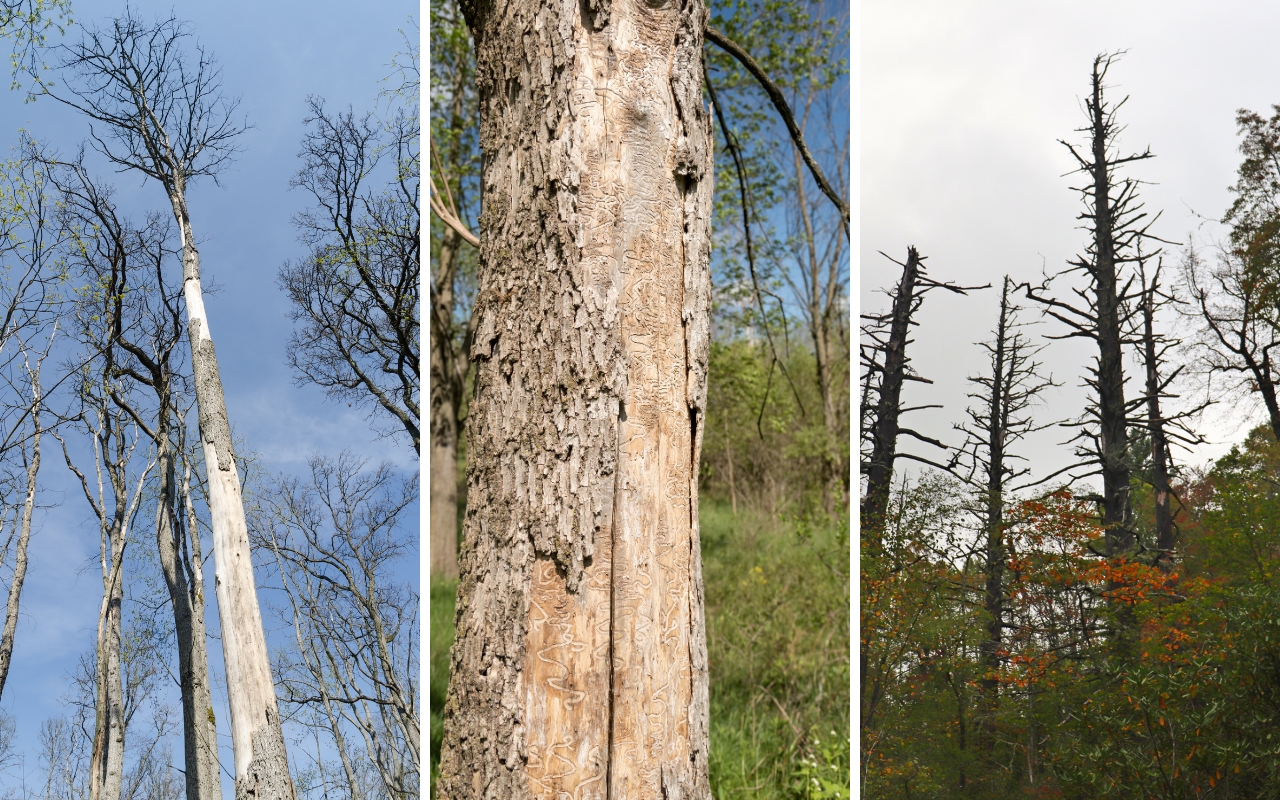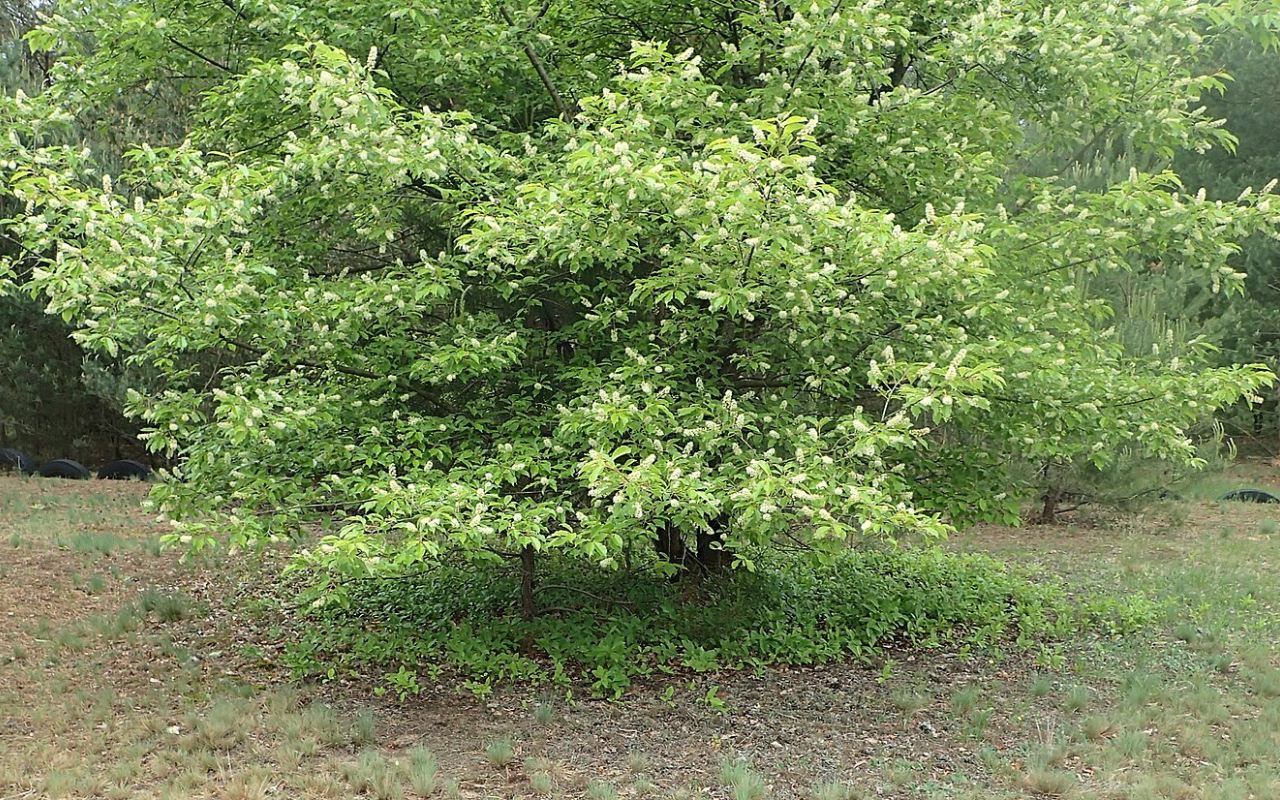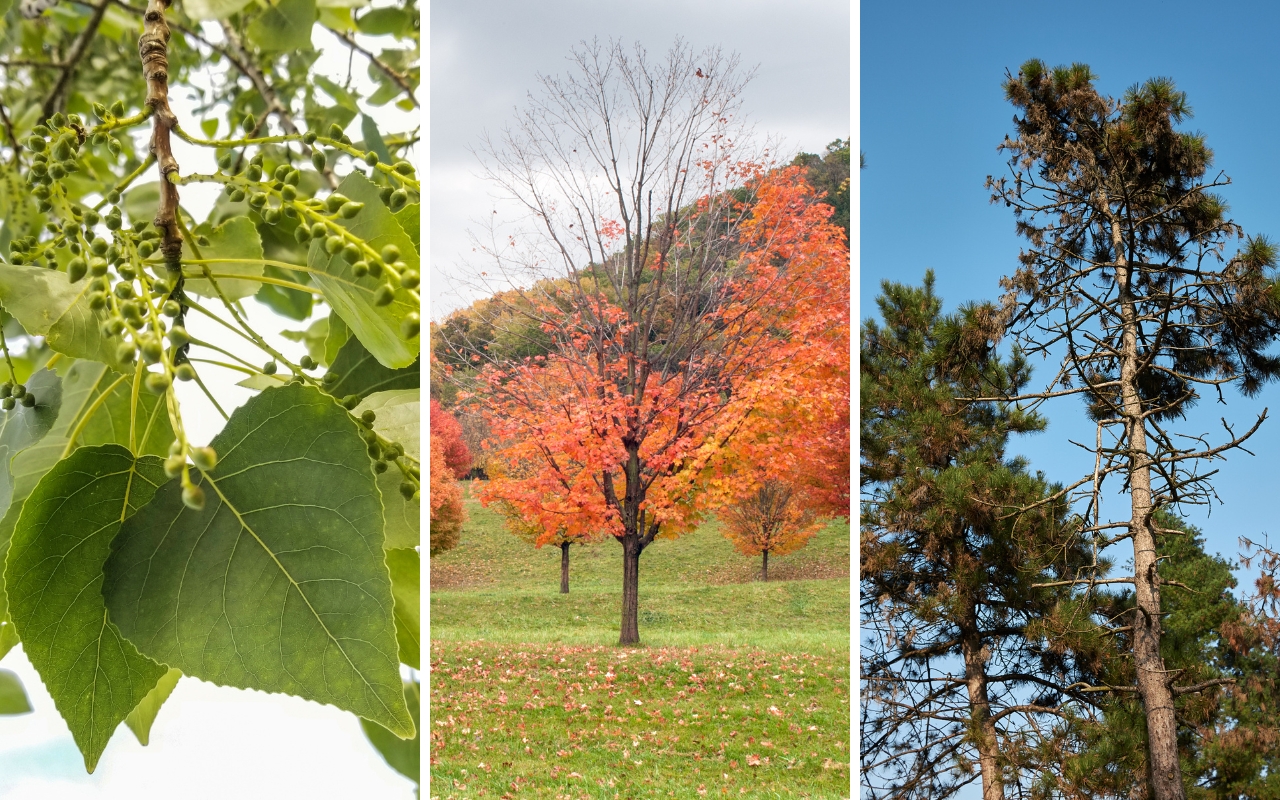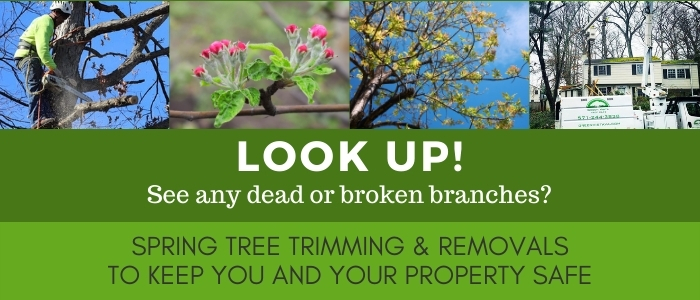
Northern Virginia Native Trees That May Need Some Extra Care
Here at Green Vista Tree Care, we always recommend planting trees native to our area whenever possible. They work best in our climate, help the local wildlife, and are easier to keep alive and maintain.
Some of our native trees, however, need a little extra care. Some are plagued with pests or diseases, others have messy seeds or tend to reseed easily, and still others don’t do well during our warm summers.
If you have any of these native Northern Virginia trees on your property or if you are thinking of planting new trees in the near future, keep these facts in mind.

From left to right: An elm tree killed by Dutch elm disease, an ash tree killed by Emerald Ash Borer, and hemlock trees killed by wooly hemlock adelgid.
Some Native NoVa Trees Are Being Killed Off by Pests and Diseases
While almost every tree and shrub can be harmed by tree pests and diseases, these native trees are being seriously injured or killed throughout Northern Virginia.
American Elm (Ulmus Americana)
Most elm trees in Northern Virginia have been hurt or killed by Dutch Elm Disease (DED). If you have an elm tree, there’s a large chance that it is infected and may become a hazard if not removed soon.
If you plan to plant an American elm on your property, some cultivars are resistant (but not immune) to DED.
Ash Trees (Fraxinus spp.)
Ash trees across the country, including here in Northern Virginia, are succumbing to the Emerald Ash Borer. When this pest infects ash trees, it leaves them brittle and dangerous. At Green Vista Tree Care, we have to take extra caution when removing dead ash trees, as they can be unstable.
If your ash tree was not preventatively treated for EAB and has died or is in the process of dying, we recommend removing it as soon as possible from your property before it causes more damage.
Planning to plant an ash tree? Make sure you have preventative treatment plans in place.
Learn more about Emerald Ash Borer and other pests impacting Northern Virginia trees>>
Eastern Hemlock (Tsuga canadensis)
The Eastern hemlock tree has been greatly impacted by the wooly hemlock adelgid, so many hemlock trees are dying in Northern Virginia.
However, they are an important tree and should be prevented from going extinct if possible. Like other trees that are succumbing to pests or diseases, be sure to have a treatment plan in place if you have or plan to add an eastern hemlock tree to your property.
Some Native NoVa Trees May Not Survive Higher Temperatures
With temperature records being met or exceeded, some trees that thrive in cooler climates are having issues surviving in Northern Virginia.
American Linden or American Basswood (Tilia americana)
Northern Virginia is in the southern part of this tree’s native range. As temperatures get higher each year, it will be harder for the American Linden tree to adapt.
Sugar Maple (Acer saccharum)
Thanks to rising temperatures, sugar maples aren’t doing well in parts of Northern Virginia, though it still grows well in more northern areas where temperatures are lower.
In fact, sugar maples are struggling to survive in much of the eastern United States.
While sugar maples have beautiful fall foliage and produce amazing maple syrup, they are unlikely to last long in your yard. Consider these trees with beautiful fall foliage instead.
White Pine (Pinus strobus)
White pine trees are native to Northern Virginia, but only the mountains. In other areas of our region, it can be hard to grow. It also tends to be blown over easily by high winds, so don’t plant one close to a home, building, fence, or power lines.
Some Native NoVa Trees Produce a Lot of “Litter”
Tree litter (such as seeds, sticks, fruit, and nuts) is natural and expected, but it can make a difference when you are deciding what kind of tree to plant, especially if you have a pool (it can be a pain to clean tree seeds out of the water) if you plan to plant near a driveway or walkway, or if you dislike raking and cleaning up your yard more than necessary.
Black Locust (Robinia pseudoacacia)
The black locust tree has fragrant and beautiful flowers but also messy seed pods. If you plan to park under a black locust tree, you may be cleaning seed pods off your car constantly. Younger black locust trees often have spines or thorns.
This fast-growing tree has weak wood, which can lead to lots of branches breaking and/or falling, especially during high winds, heavy snow, or storms.
In some areas, black locust trees are considered invasive thanks to their aggressive spread.
Black Walnut (Juglans nigra)
Black walnut, grown as a shade tree, produces large nuts that may mean more cleanup in your yard.
In some cases, the nuts and other parts of the tree can prevent other plants from growing underneath the tree, thanks to a natural toxin called juglone.
Learn more about black walnut trees and other trees that have great fall color >>

A black cherry tree with many seedlings growing beneath the tree’s canopy. Image courtesy of Krzysztof Ziarnek, Kenraiz – Own work, CC BY-SA 4.0
Some Native NoVa Trees Reseed Easily
Trees that have many seedlings pop up can become a nuisance, especially if the seedlings are allowed to grow and spread.
Black Cherry (Prunus serotina)
While this native tree has many benefits for our ecosystem and local wildlife (it hosts many caterpillars, including eastern tent caterpillars), it tends to reseed often. If you have a black cherry tree on your property, you may find yourself pulling up seedlings or cleaning up often after this tree.
However, it works well as a shade tree and has spring flowers, just keep in mind that it may take some upkeep if you plan on planting one in your yard.
Learn more about cherry trees and other fruit trees for Northern Virginia >>
Should You Plant Any of These Trees in Northern Virginia?
Yes! You can and should plant any of the above trees on your Northern Virginia property but be prepared for the extra care and attention they may require.
Northern Virginia trees that are prone to illness or disease should be kept as healthy as possible. Water when needed, schedule proper pruning to maintain the health of the trees and keep an eye out for any signs of decline.
If and when the trees do succumb to pests or disease, have them professionally removed as soon as possible to avoid any additional damage to your yard and property.
Trees that don’t well in hotter temperatures may suffer from heat stress and may need more frequent watering.
Trees with messy seeds will require more yard clean-up, and those that reseed easily will require the property owner to remove seedlings as they pop up.
Of course, before planting any new tree, ensure that the tree works for your property. A large shade tree won’t do well on a small urban lot, for example. And most flowering trees won’t produce many flowers in the shade.
If you have any questions about the trees on your property, schedule a professional tree care consultation with Green Vista Tree Care.
In need of tree care services?
Give us a call at 571-244-3838 or request a quote online!
More Articles From Green Vista Tree Care









